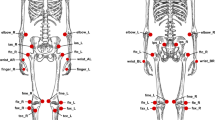Abstract
Among the serious experimental uses given to smartphones in physics, the use of integrated sensors, video analysis, and mixed uses as simultaneous material and instruments stand out for their frequency. Regarding the use of integrated sensors, there are many proposals that use the accelerometer (e.g. Chaps. 32–8) [1,2,3], the magnetometer (e.g. Chaps. 30 and 34) [4, 5], or other sensors (e.g., camera (Chap. 27) [6] or microphone [e.g. Chap. 12) [7,8,9]] to find experimental values of physical constants, such as acceleration of gravity (g), thereby trying to contribute to the studies of statics, kinematics, and dynamics. However, there are few studies that use the ambient light sensor for this kind of purpose.
Access this chapter
Tax calculation will be finalised at checkout
Purchases are for personal use only
Similar content being viewed by others
References
Kuhn, J., Vogt, P.: Analyzing spring pendulum phenomena with a smartphone acceleration sensor. Phys. Teach. 50, 504 (2012 Oct)
Monteiro, M., Cabeza, C., Martí, A.C.: Acceleration measurements using smartphone sensors: dealing with the equivalence principle. Rev. Bras. Ens. Fís. 37, 1303 (2015 Aug)
Monteiro, M., Cabeza, C., Martí, A.C.: The Atwood machine revisited using smartphones. Phys. Teach. 53, 373–374 (2015 Sept)
Pili, U., Violanda, R., Ceniza, C.: Measurement of g using a magnetic pendulum and a smartphone magnetometer. Phys. Teach. 56, 258–259 (2018 March)
Pili, U., Violanda, R.: Measuring a spring constant with a smartphone magnetic field sensor. Phys. Teach. 57, 198 (2019 Feb)
Becker, S., Klein, P., Kuhn, J.: Video analysis on tablet computers to investigate effects of air resistance. Phys. Teach. 54, 440–441 (2016 Oct)
Kuhn, J., Vogt, P.: Smartphone & Co. in Physics Education: Effects of Learning with New Media Experimental Tools in Acoustics. In: Schnotz, W., Kauertz, A., Ludwig, H., Müller, A., Pretsch, J. (eds.) Multidisciplinary Research on Teaching and Learning, pp. 253–269. Palgrave Macmillan, Basingstoke (2015)
Kuhn, J., Vogt, P.: Smartphones as experimental tools: different methods to determine the gravitational acceleration in classroom physics by using everyday devices. Eur. J. Phys. Educ. 4(1), 16–27 (2013)
Schwarz, O., Vogt, P., Kuhn, J.: Acoustic measurements of bouncing balls and the determination of gravitational acceleration. Phys. Teach. 51, 312–313 (2013 May)
Author information
Authors and Affiliations
Corresponding author
Editor information
Editors and Affiliations
Rights and permissions
Copyright information
© 2022 The Author(s), under exclusive license to Springer Nature Switzerland AG
About this chapter
Cite this chapter
Silva-Alé, J.A. (2022). Determination of Gravity Acceleration with Smartphone Ambient Light Sensor. In: Kuhn, J., Vogt, P. (eds) Smartphones as Mobile Minilabs in Physics. Springer, Cham. https://doi.org/10.1007/978-3-030-94044-7_31
Download citation
DOI: https://doi.org/10.1007/978-3-030-94044-7_31
Published:
Publisher Name: Springer, Cham
Print ISBN: 978-3-030-94043-0
Online ISBN: 978-3-030-94044-7
eBook Packages: Physics and AstronomyPhysics and Astronomy (R0)




